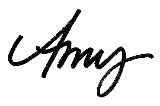Even as recently as six months ago, I honestly felt organic foods were a racket. Paying so much more per pound for the same type of food seemed like a waste to me, and let’s face it: when trying to pare down grocery costs, an apple for $1 a pound is a whole lot more appealing than one for twice as much.
After doing quite a bit of research into the matter, however, I have come to the conclusion that there are times when organic produce is definitely the way to go. For us, this isn’t feasible for all of our purchases, but for the certain fruits and vegetables that are, by nature, more inclined to soak in and thus pass along more of the pesticides used during the growing process, I now strive either to buy the organic version or opt for a safer, non-organic substitute.
Have you ever heard of the Dirty Dozen and the Clean 15? If not, you will probably be as delighted as I was a few weeks ago when I discovered this guide that exists to help make wise shopping decisions when I’m standing in the produce aisle trying to decide between the organic apple in one hand and the conventional apple in the other. This listing compiled by the Environmental Working Group of the top 12 most contaminated produce items and the 15 least affected has become a shopping tool I use each and every week!
The Dirty Dozen
(Shown to contain the most pesticide residues; strive to buy organic)
1. Celery
2. Peaches
3. Strawberries
4. Apples
5. Blueberries
6. Nectarines
7. Bell peppers
8. Spinach
9. Kale
10. Cherries
11. Potatoes
12. Grapes
The Clean 15
(Shown to be contaminated with far less pesticide residue; buying conventional is fine)
1. Onions
2. Avocados
3. Sweet corn
4. Pineapple
5. Mangos
6. Sweet potatoes
7. Asparagus
8. Kiwi
9. Cabbage
10. Eggplant
11. Cantaloupe
12. Watermelon
13. Grapefruit
14. Sweet Potato
15. Honeydew Melon
For a super handy downloadable shoppers’ guide to tuck into your purse or diaper bag to refer to the next time you shop, click here.
These two photo slideshows (one for the Dirty Dozen and one for the Clean 15) on The Daily Green give the full details of each of the items above and exactly why apples are on the dirty list while pineapples are not. A great read!
Interested in seeing the complete listing for 2010? Click here.







Having grown up in a home brimming with sewing notions and paintbrushes, Amy has a deep love for all things creative. On any given day, you’ll find her knee-deep in her latest creative endeavor, with projects ranging from sewing and crafts to home decor and kid-friendly ideas. Amy believes that everyone, regardless of skill level or experience, possesses the ability to create something beautiful, and Positively Splendid was born of her passion for helping others harness their innate creative potential.

Thrilled to have found your blog. I’ve heard bits and pieces about the clean and dirty. But didn’t really give it much attention. I think I need to. I feel as if my brain is being flooded with more and more information and I’m having a hard time keeping up! Does anyone else feel this way?
Amy,
This is great! I struggle with this as well. So often the organic produce just isn’t the same size or as yummy looking. I used to buy as much organic as available at my local grocery store, but I have drifted to conventional produce with budget concerns. Fortunately, my mom or I grow most of the items on the dirty dozen list. But, CELERY?? I never even thought about it. I’m especially curious about bananas. I almost always buy organic as the price doesn’t differ so much and they’re readily available, but I wonder where they fall? Also interesting that potatoes are on the dirty dozen, but sweet potatoes on the clean 15. I’ll have to head over to your posted links. Thanks again!
Stef
Just found your blog thru TTA!
I love your projects!
TFS!
Great info, Amy! I’ve wondered about organics in the past, but usually back off when I look at the prices. You’ve definitely given me something to think about. I’ll be printing the shopping guide and keeping it in my purse.
And congrats on all your features today!! 🙂
I try to buy as much produce locally first and then organically. I’ve recently started looking into better places to buy my meat, grass fed beef rather than corn fed. If you’ve ever seen Food Inc., it will really shock you into looking into where your food comes from. My dad raises chickens for the eggs so we use those. Consumer reports just recently had a great article on what you should by that is organic and what is a waste of money…it was very informative. Thanks for sharing your info!
Thanks for the lists!
This is great information. Most of the produce that I buy is on the Dirty Dozen list so I’m really glad to know this information! Thanks for sharing!
Rachelle S.
http://www.chelstamps.blogspot.com
http://rpsphotography.com
Amy,
I am so excited to have found you. Tracie from Stir-Fry Awesomeness sent me a link to this post. I’m a Green Gal, have recently gone vegetarian and try to buy organic as much as possible (but am not a die-hard). This list is fantastic and I’m printing it out. I’m also your newest follower.
I buy organic as much as possible, but, can’t always, of course. My rule is if it has a rind or I’m going to peel it, then I feel okay buying the non-organic.
When I was making baby food, though, it was all organic, all the time 🙂